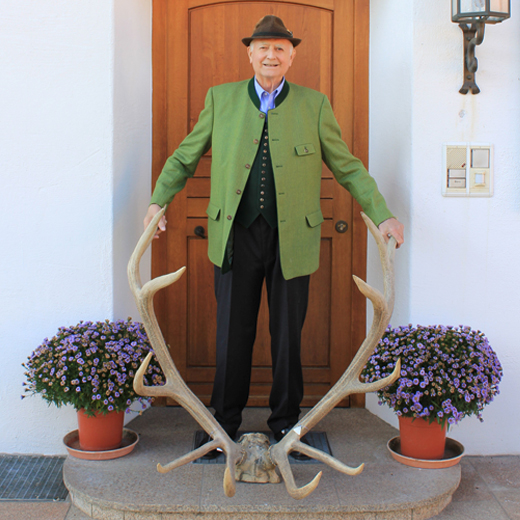





CHRISTIAN OSWALD--------* Sept. 21, 1930----† July 22, 2011
Christian Oswald spent more than half of a century with hunting, the wild game market and the trade of antlers from almost all deer species. He was particularly interested in red deer and the wide variety of different species that can be found worldwide.
At a very early age Oswald was involved in agriculture, the milling industry and retail food sector. In 1954 he started to focus on the trade and processing of game. In 1960 he moved to Munich for a meat wholesaling company. There he set up a game processing operation and had 50 butchers and packers in his employment after several years. Sales increased to 1,000 metric tons of game meat per year. A small portion of that was sold in the historic “Zerwirkgewölbe”, the oldest game and venison shop in Bavaria. The “Zerwirkgewölbe” was built in 1264 by Herzog "Ludwig der Strenge" and was the first Hofbräuhaus in Munich until 1733.
At the same time Oswald expanded the import trade with Austria, the former Yugoslavia, Hungary, Romania, the former Czechoslovakia, Poland, New Zealand and Argentina.
In 1967 he visited an international hunting exhibition in Novi Sad, Yugoslavia. Mongolia has on hand there presenting a yurt in the pavilion. Oswald was captivated by the huge trophies he had seen there taken from argali, maral deer and ibexes from this country, which he did not even know its exact geographic location at that time.
In 1971 Oswald embarked on his first trip around the world. He travelled to Australia and New Zealand via Bombay, Calcutta, Hong Kong, Manila and Jakarta.
In 1981 he met, by a stroke of luck during a business trip in Xi’an, Dr. Guo Fang Zheng, a wildlife biologist. Zheng spoke well German, he was able to talk about China’s wild animals for hours.
From 1971 to 2005, Oswald undertook subsequent research trips with Mongolian, Russian and Chinese friends. The most difficult and also most dangerous trip was the hunting expedition undertaken in 1986 for MacNeill’s Deer and White Lipped Deer at an elevation of 5.000 meters above sea level in Qinghai, Eastern Tibet.